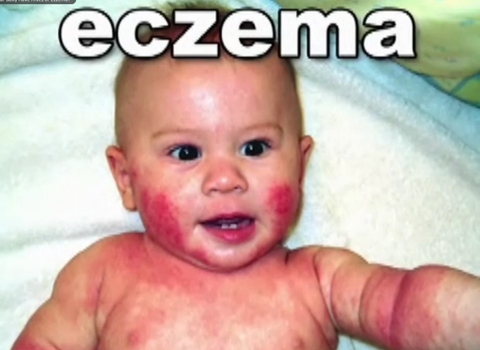I’m pleased to share this eczema blog post, a collaborative effort by a number of our physicians at Kindercare Pediatrics. Enjoy…
Dry skin. Red, rough patches. And so itchy! If this sounds like your child’s skin, then he or she may have eczema (also called atopic dermatitis). It is important to have your child assessed by his or her doctor for these symptoms, and perhaps your child has already been diagnosed with eczema. If so, then read on – the key to good eczema care is a good understanding of what it is all about!
Eczema is a very common condition in children, and can range from quite mild, with just a few rough patches, to very severe. Typically rough, red and itchy patches may appear and recur over the arms, legs, face and body. Often it starts very early in life, at just a few months old, but in others it may begin during childhood or beyond. Parents often wonder if their children will grow out of eczema, and indeed many children do – infants, especially, often grow out of their eczema in a few years. Children who do not have many family members with eczema, asthma or other allergies are also more likely to grow out of their eczema eventually. However, there are no strict rules to predict which children will outgrow their eczema. It is important to understand that eczema will require treatment for as long as your child has it.
Many parents express concern that their child’s skin has improved with treatments, but that the patches come back every time the treatment is stopped. This is because eczema is a chronic condition – we don’t have a way to cure it completely! Our goal with treatment is good control of your child’s eczema, keeping the itch down and the skin soft and healthy. Remember that eczema can be more than ‘skin deep’: If not treated properly, it can lead to skin breakdown and infection, constant itching and poor sleep, difficulty concentrating at school, bullying, family stress… the list goes on. All of these can be prevented with a good skin care and treatment plan.
When a child has eczema, his or her skin is different from normal skin in important ways – and these differences lie in the genes, which we cannot change. Normal skin acts as a good barrier from the outside world, performing two important roles: keeping water in the skin, and keeping bacteria and irritants out. Skin with eczema has a weak barrier, resulting in water loss and dry skin, as well as inflammation from bacteria and irritants that have gained entry. This is where the dry, itchy and red patches come from. When your child scratches, this leads to more inflammation and skin breakdown, which leads to itch, which leads to more scratching… and on and on. To treat eczema we have to treat both the dryness and the inflammation of the skin, breaking the itch-scratch cycle.
Eczema flares may be triggered by several things, not all of which we can control. Many children tend to flare in the wintertime, when the air is cold and dry. Others flare in the summer due to sweating. Irritation or chafing of the skin due to certain fabrics or playing in the grass may trigger some children. And sometimes, eczema will flare for no reason at all.
Often parents wonder if their child may have a food allergy causing their eczema. While children with eczema do have a higher chance of having allergies, we know that in the vast majority of children, food allergies are not the cause of eczema flares. Elimination diets are not recommended for the treatment of eczema.
If your child has been assessed by his or her doctor and diagnosed with eczema, you may refer to our Eczema Care Handout for detailed advice on how to care for your child’s skin. Your child’s doctor may also refer to a skin specialist to help you manage your child’s eczema if need be. The most important things you can do to help improve eczema are reviewed here.
Proper skin care for eczema requires daily bathing, to get water into the skin, followed by application of a good, thick moisturizer head-to-toe. The moisturizer acts as an artificial barrier to keep water in, supplementing the skin’s natural barrier. Choose a moisturizer which is thick and which your child tolerates well. Apply moisturizer as often as needed – at least twice a day, and whenever your child’s skin is feeling dry or itchy. This will prevent new eczema flares as much as possible – but remember that even with the best care, flares will happen!
Once a patch of eczema exists, moisturizers alone are not enough. Anti-inflammatory medications applied to the skin are required to heal the patch and restore the skin. Most commonly, corticosteroid ointments of a mild-to-moderate strength are prescribed to treat eczema. Research and experience shows that these medications, when used appropriately for eczema in children, are generally very safe and do not cause any significant side effects such as thinning of the skin (atrophy). Start applying your child’s prescribed medication twice or three times daily as soon as a patch starts, and stop when the patch is fully healed and feels smooth. Do not apply the ointments too sparingly – you need to put on enough to make a difference!
We hope that this post, along with our Eczema Care Handout, will help you successfully manage your child’s eczema along with the support of your child’s doctor. Remember that eczema keeps coming back, and that there may naturally be good weeks and bad weeks. But good eczema care makes a potentially big problem into a little problem. It’s true, eczema care can be a lot of work! We hope you find that it is worth it – having healthier, more comfortable skin allows a child to get back to the business of being a kid!
